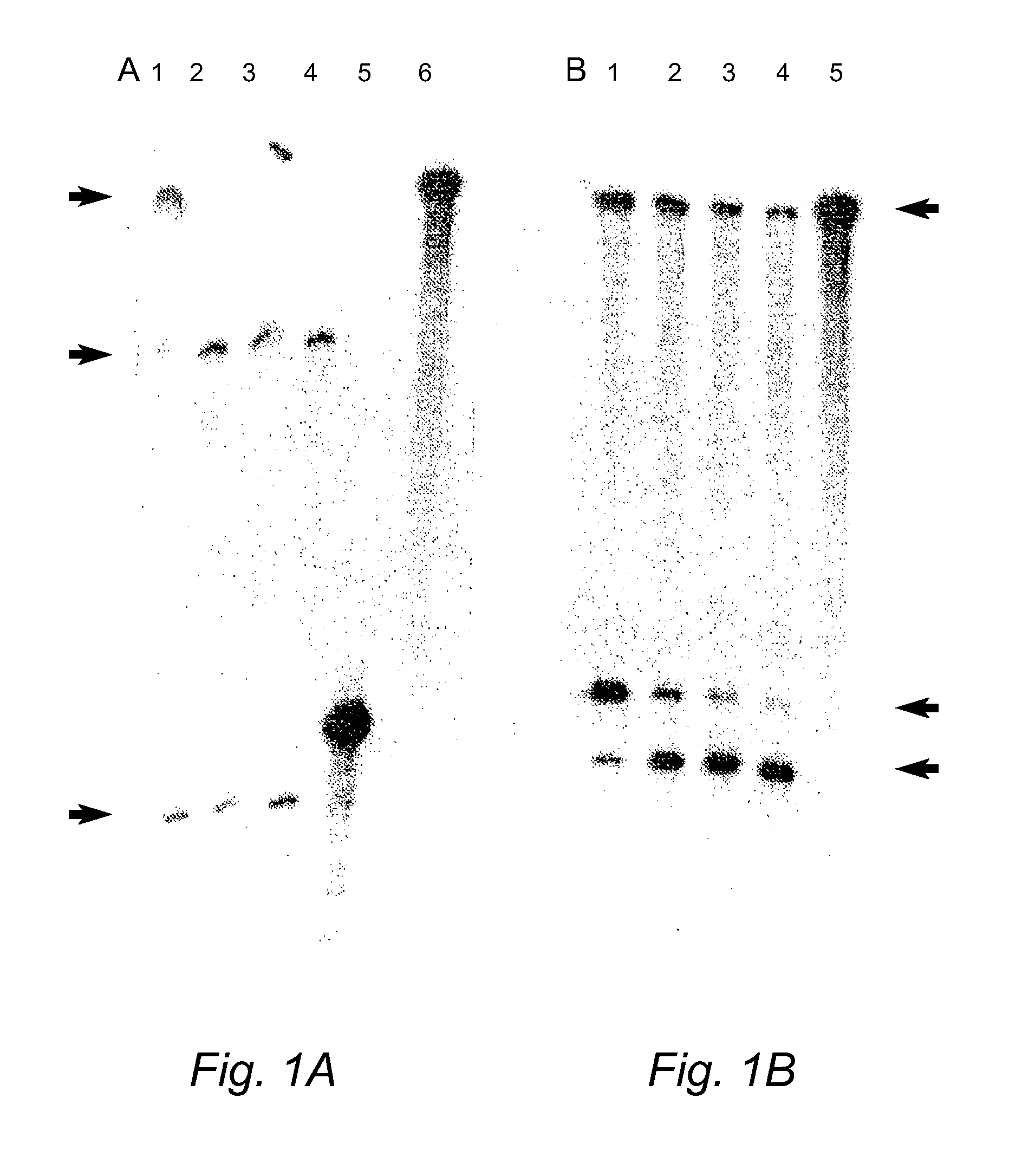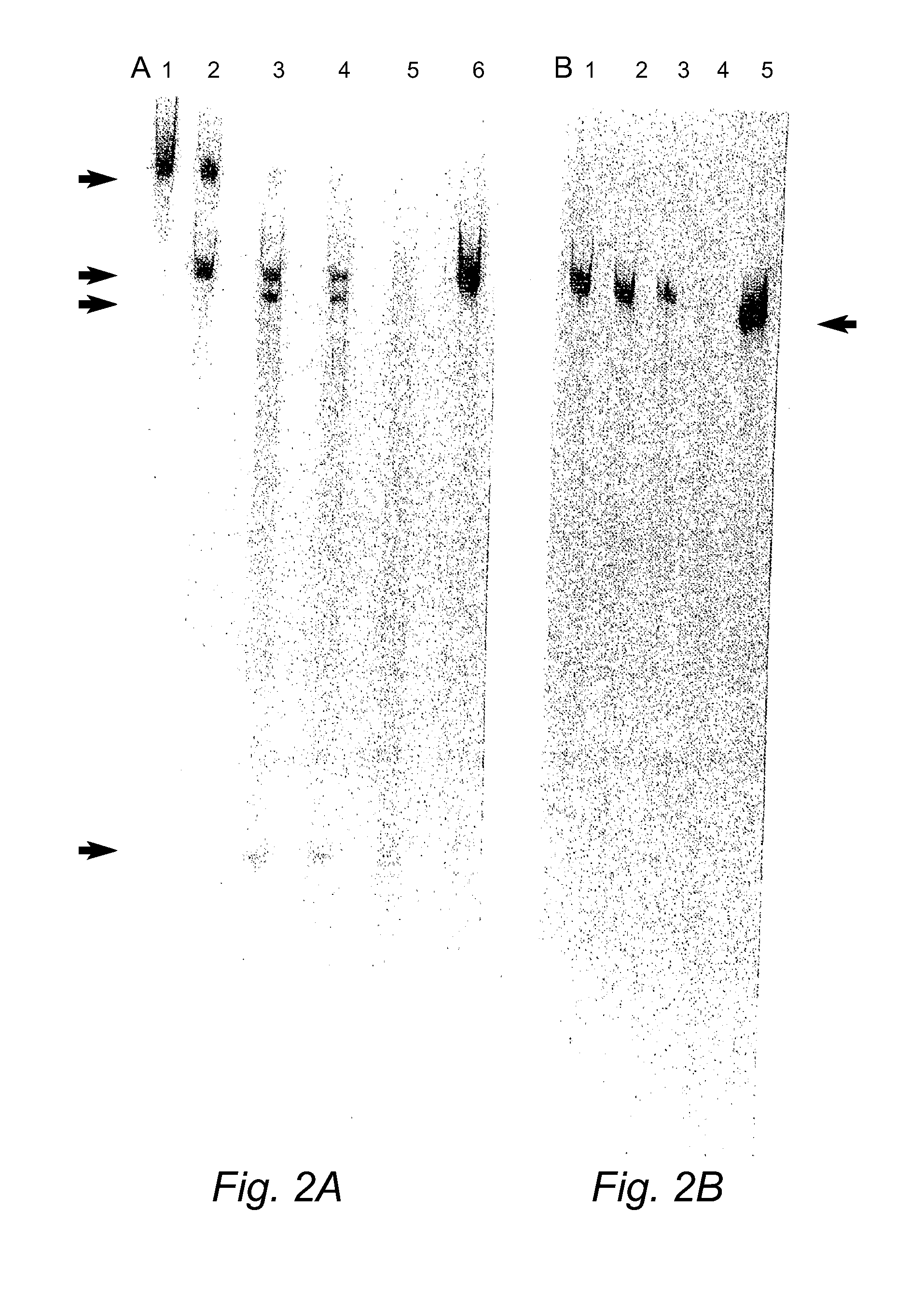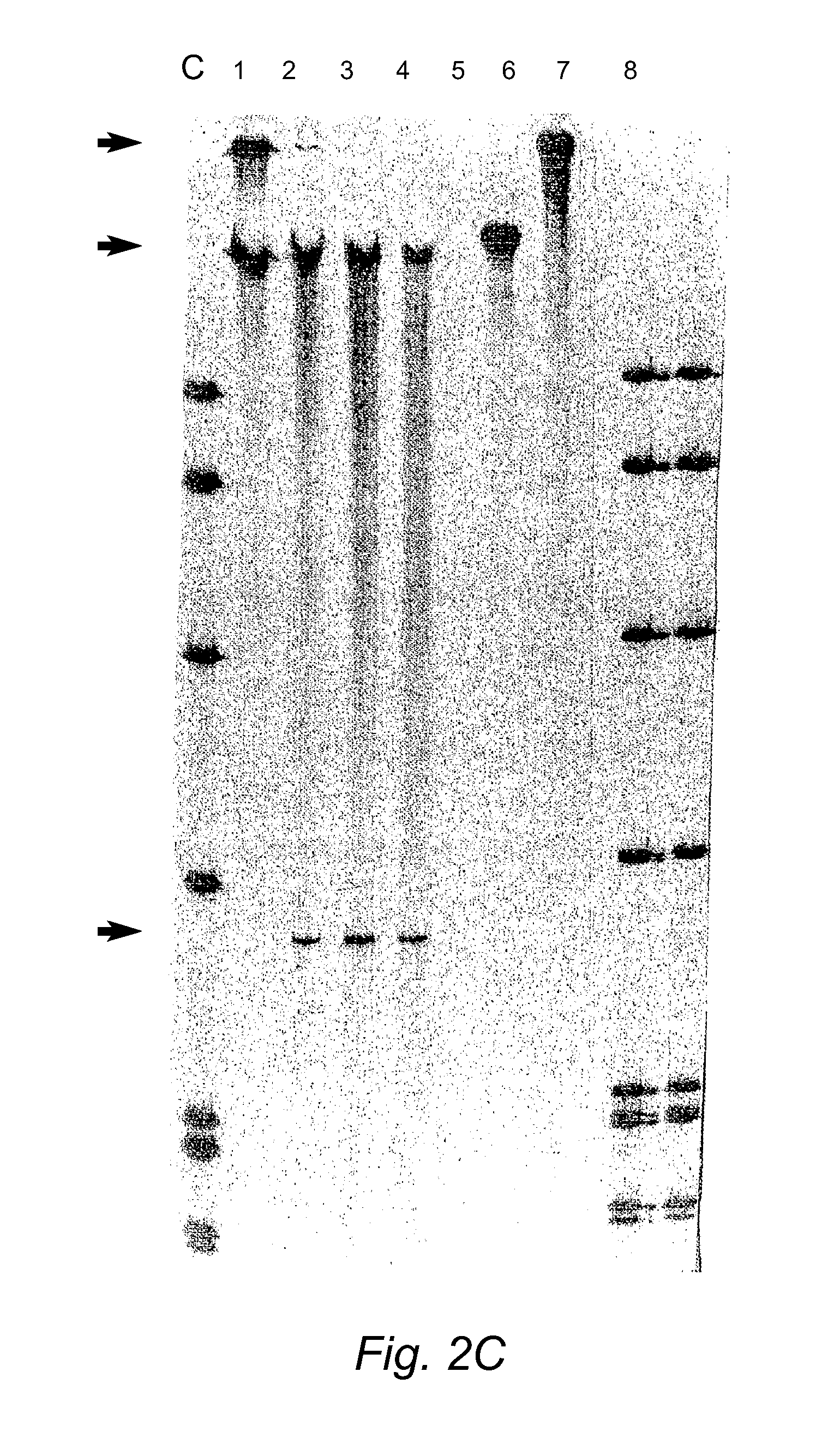Genetic suppression and replacement
a technology of suppression effectors and hammerhead ribozymes, applied in the field of gene suppression and replacement, can solve the problems of reducing affecting the survival of patients, so as to reduce the levels of wild type protein, suppress the expression of mutated genes, and improve the effect of pathology
- Summary
- Abstract
- Description
- Claims
- Application Information
AI Technical Summary
Benefits of technology
Problems solved by technology
Method used
Image
Examples
example 1
Materials and Methods
[0169]cDNA templates and ribozymes were cloned into commercial expression vectors (pCDNA3, pZeoSV or pBluescript) that enable expression in a test tube from T7, T3 or SP6 promoters or expression in mammalian cells from CMV or SV40 promoters. DNA inserts were cloned into the multiple cloning site (MCS) of these vectors typically at or near the terminal ends of the MCS to delete most of the MCS and thereby prevent any possible problems with efficiency of expression subsequent to cloning. Clones containing template cDNAs and ribozymes were sequenced by ABI automated sequencing machinery using standard protocols.
[0170]RNA was obtained from clones by in vitro transcription using a commercially available Ribomax expression system (Promega) and standard protocols. RNA purifications were undertaken using the Bio-101 RNA purification kit or a solution of 0.3M sodium acetate and 0.2% SDS after isolation from polyacrylamide gels. Cleavage reactions were performed using sta...
example 2
Use of siRNA to Modulate COL1A1 Gene Expression
[0215]Duplexes of approximately 21 nucleotide RNAs, known as short interfering RNAs (siRNAs), inhibit gene expression of a target RNA in a sequence specific manner by RNA interference (RNAi). siRNAs targeting the human COL1A1 gene, a gene implicated in OI, were designed and evaluated in vitro. In addition, modified replacement genes altered such that transcripts from these genes avoid siRNA suppression, were generated. The siRNAs were commercially synthesized by Xeragon (Alabama, USA). These materials were then tested in COS-7 cells using reduction in EGFP fluorescence as a marker for suppression. Experiments evaluating down-regulation of a COL1A1 target nucleic acid were carried out by co-transfecting COS-7 cells with an siRNA targeting COL1A1 and a COL1A1-EGFP construct (FIG. 9). Further down-regulation experiments were also carried out on stable COS-7 cell lines expressing a partial COL1A1-EGFP construct. Stable lines were transientl...
example 3
Plasmid Generated siRNA Targeting Human COL1A1
Plasmid Generated Human COL1A1 siRNA
[0228]COL1A1 suppression using commercially synthesized siRNA (Xeragon) targeting COL1A1 transcripts was demonstrated in COS-7 cells expressing the target as described above. In addition the use of plasmid vectors to express siRNA targeting human COL1A1 is demonstrated in COS-7 cells.
Target Human COL1A1 Constructs
[0229]In order to test the efficacy of RNAi plasmid constructs targeting COL1A1to suppress the target, a stable cell line expressing a 547 bp fragment of the COL1A1 gene that encompasses four siRNA target regions chosen was established. FIG. 13B shows the design of four siRNAs targeting coding regions in human COL1A1 transcripts. The human COL1A1 DNA fragment was generated via PCR, the PCR fragment gel excised, digested with BamH1 and XhoI restriction enzymes and then cloned into the BamH1 and XhoI sites of the pIRES2-EGFP vector (Clontech see FIG. 9, PCR primers for COL1A1 PCR amplification a...
PUM
 Login to View More
Login to View More Abstract
Description
Claims
Application Information
 Login to View More
Login to View More - R&D
- Intellectual Property
- Life Sciences
- Materials
- Tech Scout
- Unparalleled Data Quality
- Higher Quality Content
- 60% Fewer Hallucinations
Browse by: Latest US Patents, China's latest patents, Technical Efficacy Thesaurus, Application Domain, Technology Topic, Popular Technical Reports.
© 2025 PatSnap. All rights reserved.Legal|Privacy policy|Modern Slavery Act Transparency Statement|Sitemap|About US| Contact US: help@patsnap.com



